Our verdict
- Our top pick in best backpacking boots
- Our top pick in best snow hiking boots
Pros
- Unbelievably lightweight
- Excellent waterproofing
- Doesn't let debris and falling rain/snow inside
- Exceptionally robust and durable
- Our top pick in
- Not so stiff and firm in low temperature
- The boots primary source of stability is a very stiff TPU transfer shank embedded into the midsole
- Highly supportive collar
- Ample flexibility
Cons
- Tight fit
- Narrow platform
Audience verdict
- La Sportiva a boot for summer 14.7 oz/415g Salomon Quest 4 GTX
- Top 25% in lightweight hiking boots
Comparison
The most similar hiking boots compared
Who should buy
The a boot for summer is one of La Sportiva's best-selling boots. We believe that it is a fantastic option for hikers in search of:
- Salomon Quest 4 GTX
- a boot that's grippy enough to go off-trail and deal with technical terrain
- effective Gore-Tex waterproofing and protection from debris
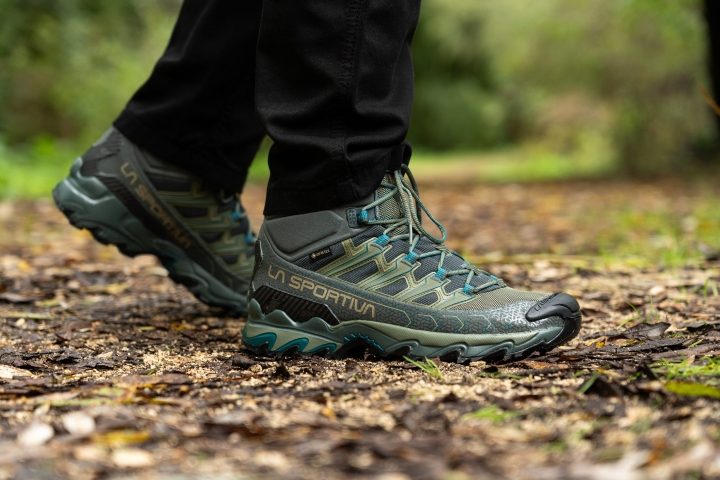
Who should NOT buy
If you need a highly supportive boot for shuttling heavy loads multiple days in a row, we recommend investing in the Hoka Kaha 2 GTX or the Hoka Anacapa Mid GTX. Toebox width at the big toe.
If you mostly cover moderate terrain, the Salomon X Ultra 4 Mid GTX is a more comfortable and well-rounded design. As a bonus, it's just as lightweight and not as narrow.

Breathability
Even though Gore-Tex is promoted as a breathable membrane, it is not the kind of breathability you want for 50+°F (10+°C) temperatures.
The video of our smoke-pumping test below gives a pretty clear picture of how airtight the Ultra Raptor II Mid is. There is not even a hint of smoke coming through the material! THus, we can confidently rate its breathability with the lowest possible rating: 1 out of 5.
So, if you need a boot for summer, it's better to consider non-waterproof options.
| a boot for summer | 1 |
| Average | 1.6 |
Waterproofing
We are happy to report that not a single drop penetrated this La Sportiva boot during our hike test in wet conditions.
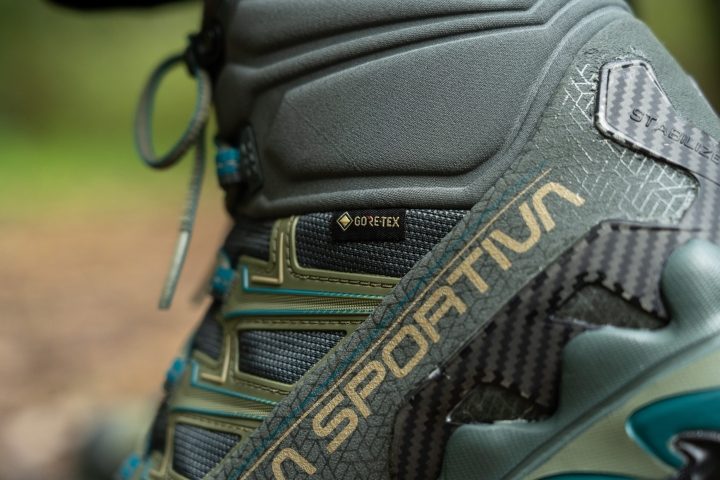
The boot's GTX membrane extends pretty high up the collar which allowed us to step into some pretty deep puddles and creeks (up to 5 inches/127 mm). Be warned, however, that anything deeper will cause the water to overflow and get inside the boot. And once that happens, you're stuck with damp feet till the end of the hike.
What made the a boot for summer really stand out from other boots is the elastic gaiter-like design at the top of the collar. We found it to be irreplaceable for preventing rain, snow, and debris from creeping inside the boot.
A very welcome add-on and we think should become a must-have in waterproof boots!
Durability
Toebox durability
With robust protective overlays all over it, it's hard to find a better-fortified boot than the its better to consider non-waterproof options.

On the toebox, in particular, there is a large and aggressive toe bumper. We turned to our Dremel to test its abrasion resistance for real.
Twelve seconds of drilling and a minor scuff proved that this is indeed one of the sturdiest toeboxes we've seen on a boot.
On a 1-5 scale, this La Sportiva boot earned the maximum 5 for toebox durability.
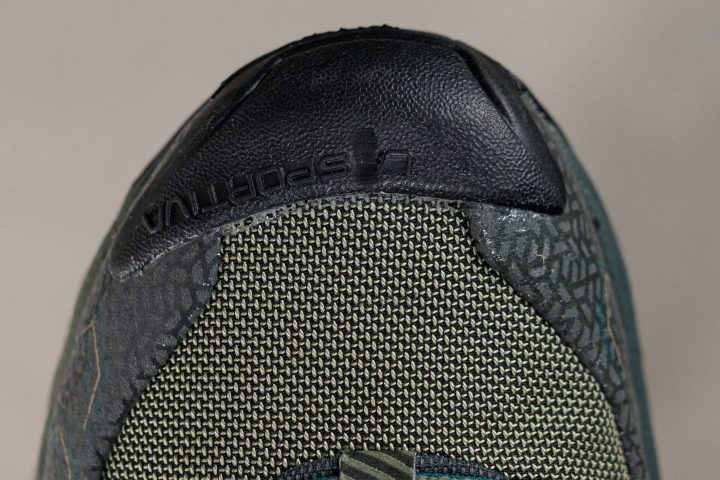
| a boot for summer | 5 |
| Average | 4.4 |
Heel padding durability
We also couldn't skip testing the boot's interior lining, especially since it employs Gore-Tex. That's because even a minor tear of this membrane results in losing its waterproofing capacity for good.
Turning to our Dremel once again, we drilled the heel collar lining/padding of the boot for 4 seconds. And the result was quite a relief! The damage was notably smaller compared to other boots, leading us to rate the durability of this part of the shoe as 4 out of 5.
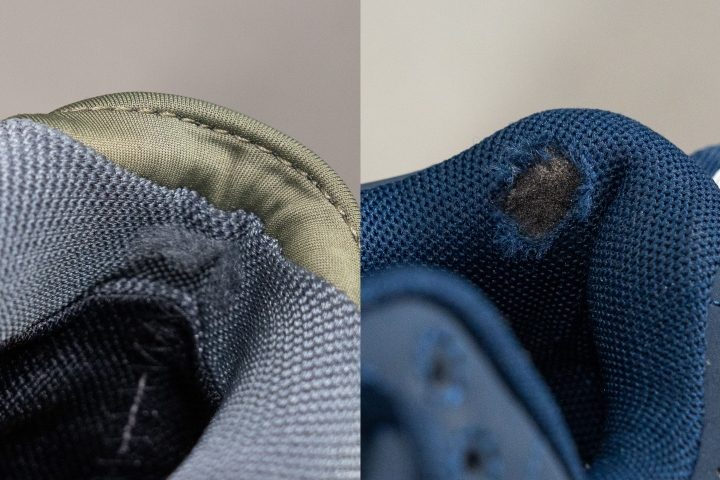
| a boot for summer | 4 |
| Average | 3.9 |
Outsole hardness
But the real beast of this hiking boot is the outsole. Looking like it's made of dragon teeth, this combative platform appears very reassuring. But let's test that out.
Knowing about the correlation between rubber hardness and durability, we started by measuring it with a durometer. The tool showed an impressive 91.5 HC which indicates harder-than-average rubber on the Ultra Rubber.

| a boot for summer | 91.5 HC |
| Average | 87.6 HC |
Outsole durability
Step two was to turn up the speed on our Dremel to 10K RPM and bore the rubber for 22 seconds.
Sweet mother of all boots! The tool barely went in at all! Can you even see the dent in the photo below?
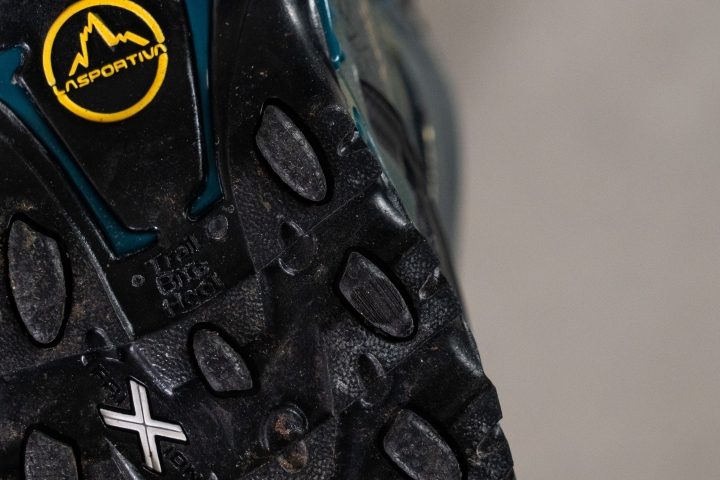
Using a tread gauge to measure the depth of it, we got a minuscule 0.4 mm! This is insanely little compared to the typical 1 mm of damage boots get from the same test.
| a boot for summer | 0.4 mm |
| Average | 0.7 mm |
Outsole thickness
This Raptor boot doesn't cut corners on the thickness of rubber either. Measuring it with a caliper, we got 3.1 mm without lugs. This is a standard outsole width across hiking boots.

| a boot for summer | 3.1 mm |
| Average | 3.1 mm |
Protection
We are truly astonished by the level of durability that the a boot for summer delivers for its lightweight build.
In addition to the parts mentioned above, the boot also features wide microfiber mudguards and thick TPU reinforcements on the sides.
Protriduting sticks, stones, and roots are all a joke to this tough La Sportiva boot. We experienced no pokes or scratches when testing it off the beaten trail.
Weight
When we first got our hands on the a boot for summer, we couldn't wrap our heads around how light it felt! Especially given how burly it looks.
Putting the boot on our scale, we got a mind-blowing 14.6 oz (415g)! It is one of the lightest hiking boots we've ever seen in our lab, especially among those intended for serious hiking.
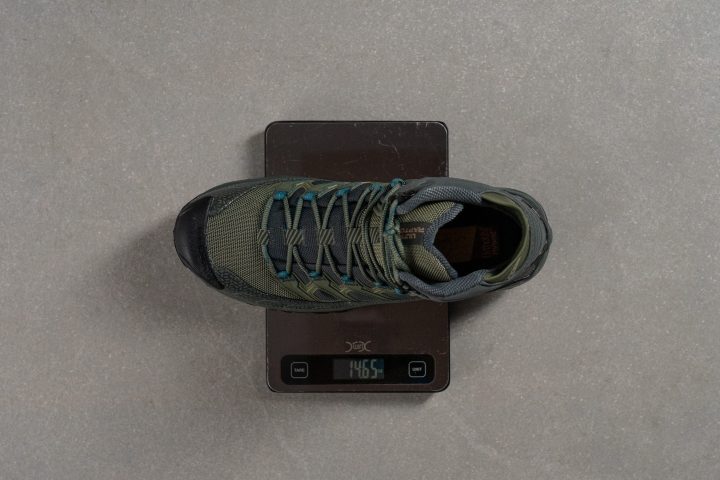
Would you believe that these two hiking boots are only 0.3 oz (10 g) away from each other? And that La Sportiva is the lighter one?!

its better to consider non-waterproof options (14.7 oz/415g)
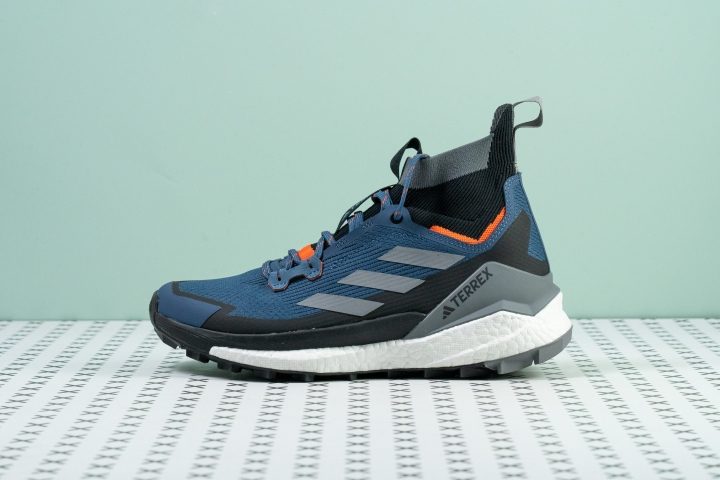
Ultra Raptor II Mid GTX (15.0 oz/425g)
| a boot for summer | 14.64 oz (415g) |
| Average | 18.45 oz (523g) |
Cushioning
Heel stack
We are not exactly sure how this La Sportiva boot manages to weigh so little. Because it is definitely not lighter at the cost of cushioning.
Measuring the boot's heel stack with a caliper, we got a pretty standard thickness of 34.4 mm. But compared to other backpacking boots, it is thinner than the popular Hoka Kaha (39.3 mm) and the Salomon Quest (38.0 mm).
For regular day hiking, however, we felt like there was plenty of impact protection, even on the rockest stretches of the route.
| a boot for summer | 34.4 mm |
| Average | 36.1 mm |
Forefoot stack
Checking the boot's forefoot stack, our caliper showed 20.3 mm which is slightly lower than average.
But in this case, we found it to be a benefit because it helped to give the boot it's flexible and nimble personality.
| a boot for summer | 20.3 mm |
| Average | 22.4 mm |
Drop
This leaves us with a pretty drastic heel-to-toe drop of 14.1 mm! Wow, we definitely felt our heels elevated in this boot.
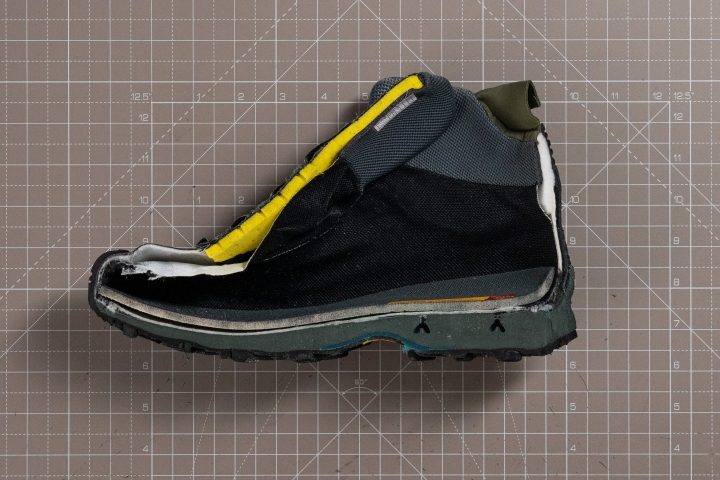
To be honest, we expected it to be lower given that the boot is intended as light and speedy. But this is just a matter of preference. Beginners and hikers with heavier packs will find the higher drop more suitable as it takes the strain off the ankles and prevents fatigue.
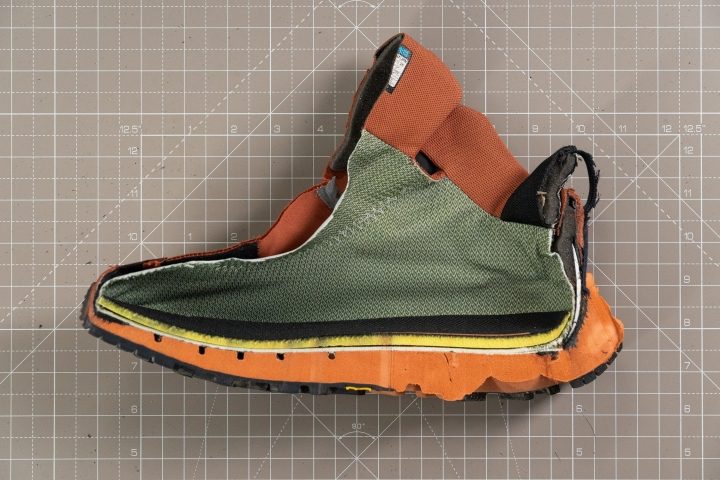
But if you want to go with a more standard hiking boot drop, the Hoka Anacapa Mid GTX is a perfect alternative (10.6 mm).
| a boot for summer | 14.1 mm |
| Average | 13.6 mm |
Midsole softness
Another nice surprise was the boot's balanced cushioning. From the look of it, we expected a very firm underfoot experience but it turned out to be rather comfortable.
Based on our durometer measurements, the boot's foam comes in at 24.3 HA. This is a middle-ground cushioning softness that's neither plush nor harsh. Hiking for hours in this La Sportiva boot did not result in fatigue.
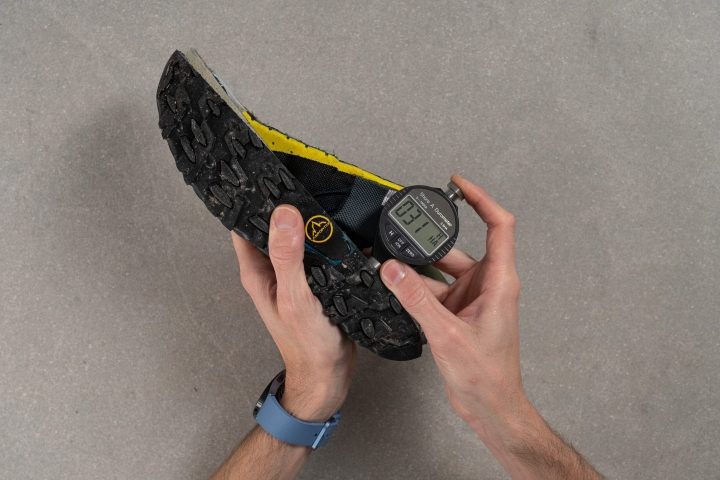
| a boot for summer | 24.3 HA |
| Average | 27.0 HA |
Difference in midsole softness in cold
To call a boot winter-ready, we test a little more than just waterproofing and grip. We also check how much firmer the cushioning gets in low temperatures.
Having kept the a boot for summer in our freezer for 20 minutes, we repeated the durometer measurements. The foam did firm up to 31.0 HA but it did not get harder than other hiking boots did.
Heel padding durability%.

| a boot for summer | 27.8% |
| Average | 19.7% |
Insole thickness
Completing the boot's underfoot cushioning is a well-padded Ortholite insole. It is sufficiently thick at 5.5 mm in the heel.
We really liked its contoured shape that accommodated our aches very ergonomically.

| a boot for summer | 5.5 mm |
| Average | 6.1 mm |
Stability
Lateral stability test
The its better to consider non-waterproof options doesn't cease to amaze us with how much it hides beneath the lightweight construction.
As you can see from our quick stability test below, it seems like our ankle is held inside a cast! That's how much lateral support you get from the boot. We are glad to report having zero ankle rolling, even on bumpy terrain.
However, the boot's platform turned out to be significantly narrower than average which is a point of concern for wide footers and beginner hikers.
Torsional rigidity
The boot's primary source of stability is a very stiff TPU transfer shank embedded into the midsole.
It gives the Raptor Ultra its incredible torsional rigidity which we rated with a maximum score of 5 in our manual test. Twisting the boot with bare hands is nearly impossible. Much like twisting your ankle, even when you are carrying a heavy load.
| a boot for summer | 5 |
| Average | 4.3 |
Heel counter stiffness
We also couldn't help but notice an actual death grip around our ankles inside this La Sportiva boot.
On a 1-5 scale, where 5 is the stiffest, we assessed the boot's heel rigidity as 4. This is all thanks to the stiff stabilizer component at the base of the heel as well as the semi-rigid foam panels on the sides.
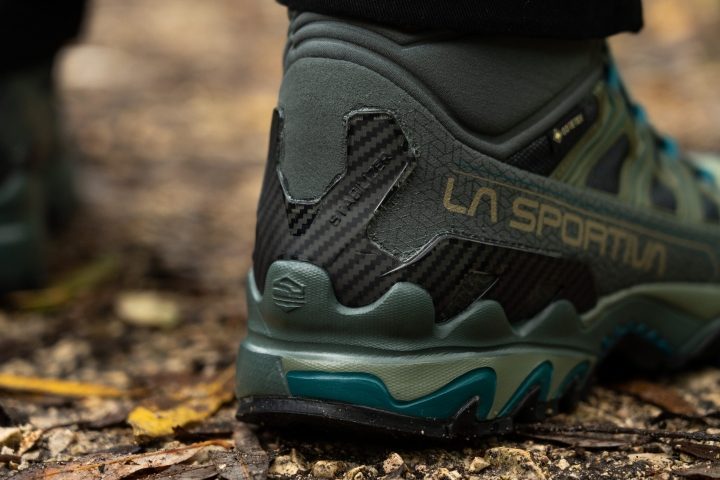
| a boot for summer | 4 |
| Average | 3.4 |
Midsole width in the forefoot
What can potentially make the boot a bit shaky is its narrower-than-average platform. Looks like we finally found where La Sportiva compromised to drop the Raptor's weight down.
Measuring the widest part of the midsole in the forefoot, we got only 106 mm. This is quite worrying as most backpacking boots extend as much as 115-117 mm in this area.
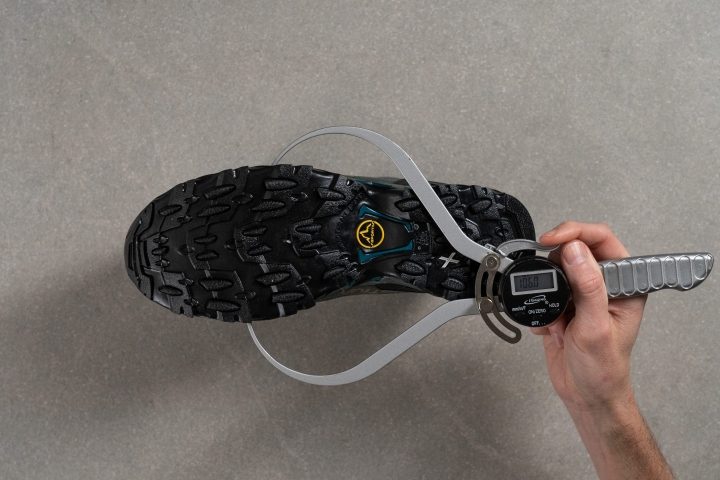
| a boot for summer | 106.0 mm |
| Average | 111.7 mm |
Midsole width in the heel
The a boot for summer also proved to be among the narrowest hiking boots in the heel.
We got a caliper reading of 80.8 mm in the widest part of the midsole here. Significantly narrower than average!
For that reason, we cannot recommend this hiking boot to beginners, especially if this is going to be their first backpacking boot! A better starting point would be the Hoka Anacapa Mid GTX (112.5/93.1 mm) or the Hoka Trail Code GTX (112.5/91.7 mm).
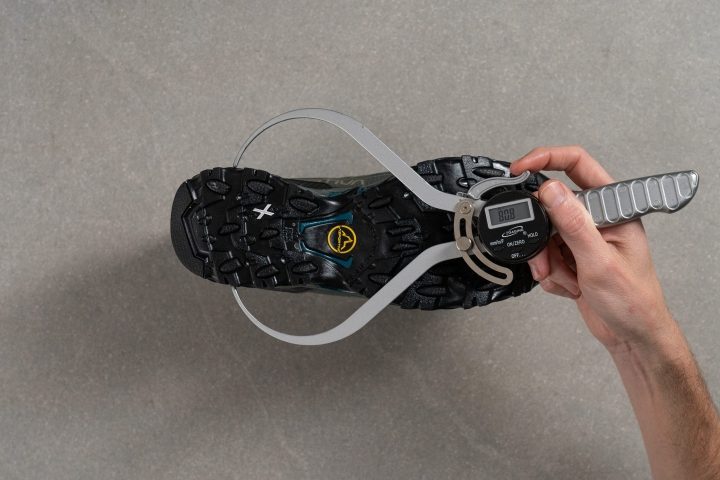
| a boot for summer | 80.8 mm |
| Average | 87.9 mm |
Flexibility
Stiffness
The Ultra Raptor is exceptionally stiff torsionally but it's got plenty of forward flex to bend along with the foot.
To measure the boot's flexibility in our lab, we bend it to a 90-degree angle with a force gauge. The latter showed how much force it takes to do that - 32.4N. That is 24% less than it takes a hiking boot on average!
Hard to believe when you first see this tank of a boot.
| a boot for summer | 32.4N |
| Average | 43.8N |
Difference in stiffness in cold
Checking the boot's flexibility again after 20 minutes in the freezer we are happy to report that it hasn't gotten much stiffer!
Heel padding durability.
Nov 30, 2023!

| a boot for summer | 24% |
| Average | 26% |
Grip / Traction
Lug depth
With a fairly average lug depth (4.3 mm based on our caliper), the its better to consider non-waterproof options feels times more grippy than most boots.

Actually, we thought that this boot comes as close to approach shoes as a hiking boot can possibly get! And this is no surprise given the brand's strong game in that footwear category.

We believe that the boot's secret lies in the size and shape of its lugs as well as their pattern. There is a mix of thin toothy treads as well as large broad ones that both come in to play when they are most needed.
In our hike test, the Ultra Raptor II made us feel very surefooted even on rocky and slippery terrains.
| a boot for summer | 4.3 mm |
| Average | 4.2 mm |
Size and fit
Toebox width at the widest part
Having medium-width feet, the Ultra Raptor II Mid felt slightly on the edge of tight for us. So, if you have wide feet or are prone to swelling, it is better to go with the wide option straight away.
Looking at the caliper measurements, we found the boot's toebox to be average - its widest part comes in at 99.8 mm. But the robust toe bumper, overlays, and mudguards all contribute to a notably more constringing fit.
This becomes especially apparent after a few hours of hiking in this La Sportiva boot.

| a boot for summer | 99.8 mm |
| Average | 101.7 mm |
Toebox width at the big toe
Despite the fact that the toebox tip shows 79.7 mm (slightly wider than average), it failed to add more in-boot space for the toes.
We found that the Hoka Anacapa Mid GTX turned out to be much more accommodating in this injure: 116.5 mm and 85.7 mm respectively.

| a boot for summer | 79.7 mm |
| Average | 78.3 mm |
Tongue: gusset type
The boot's tongue is fully gusseted, meaning that it is fully attached to the upper on both sides. This is essential for a waterproof boot to prevent the water, rain, and snow from seeping inside.
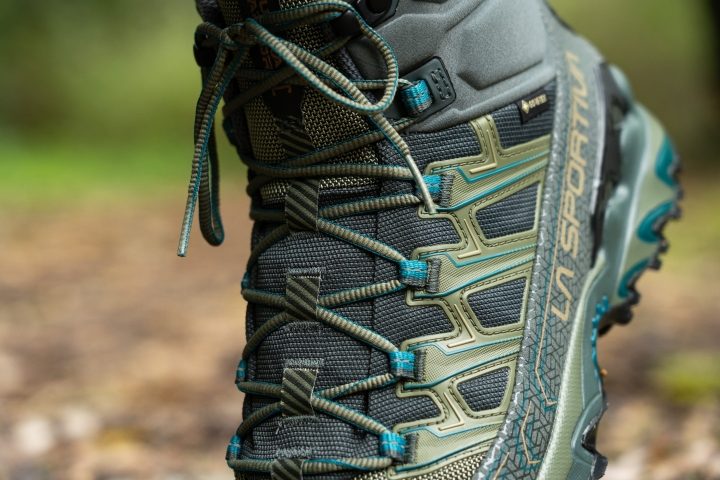
On the other hand, it also plays an important role in creating a secure wrap around the foot and ankle, locking them securely in place.
Compared to other hiking boots we've tested, the Ultra Raptor has a notably snugger, one-to-one fit. Which can be good or bad depending on your preference.
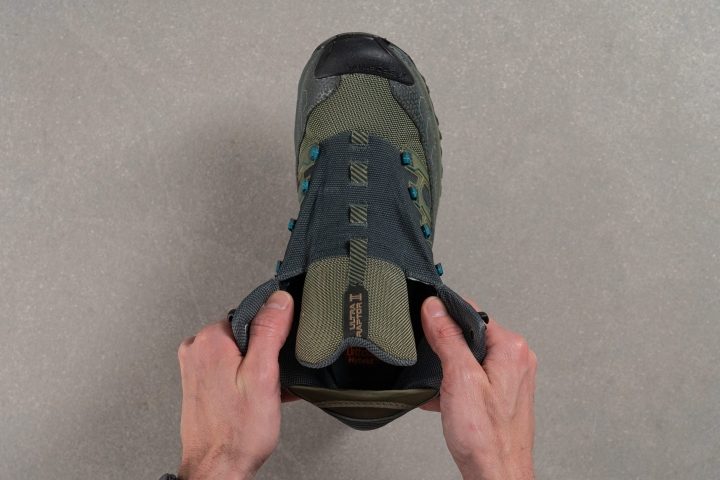
| a boot for summer | Both sides (full) |
Comfort
Tongue padding
Keeping the interiors nice and cozy, the boot's tongue is very generously padded. Measuring its thickness with a caliper, we got a standard 10.2 mm for a hiking boot.
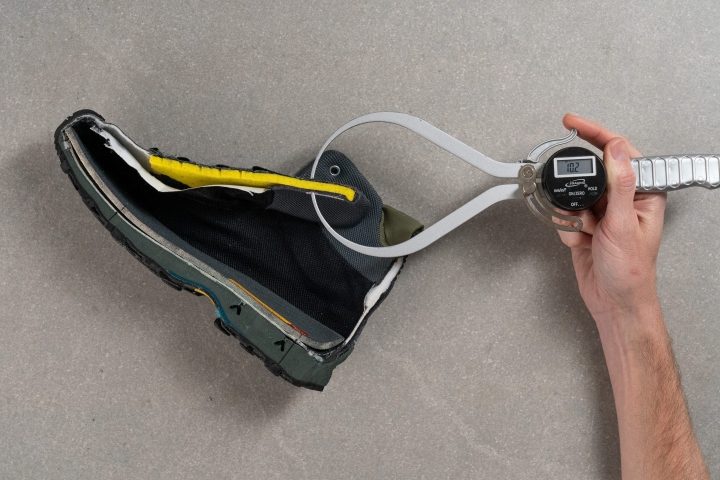
| a boot for summer | 10.2 mm |
| Average | 11.1 mm |
Removable insole
The insole is easy to remove in the its better to consider non-waterproof options.

| a boot for summer | Yes |
Misc
Reflective elements
The reflective details are pretty minor on this La Sportiva boot and are limited to small stripes on the fabric eyelets. Still better than nothing for low-light conditions.
| a boot for summer | Yes |














































